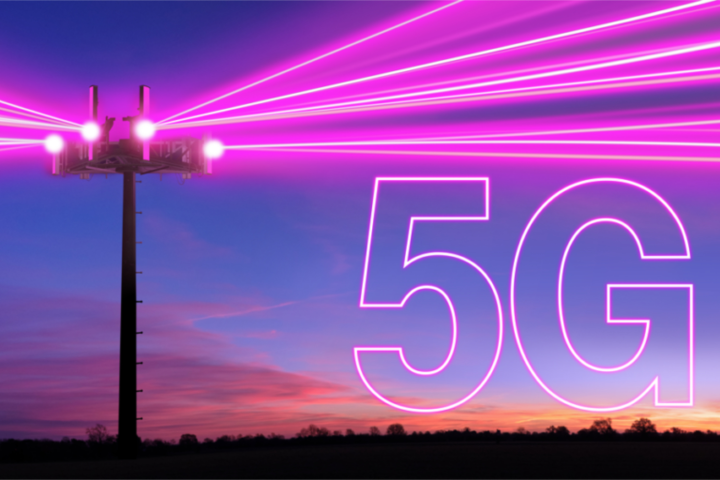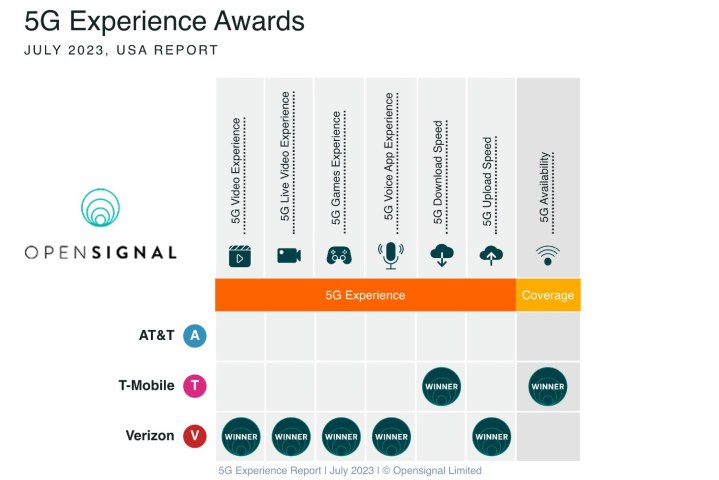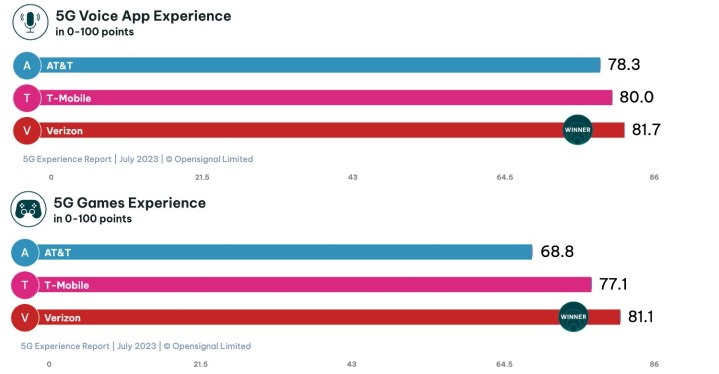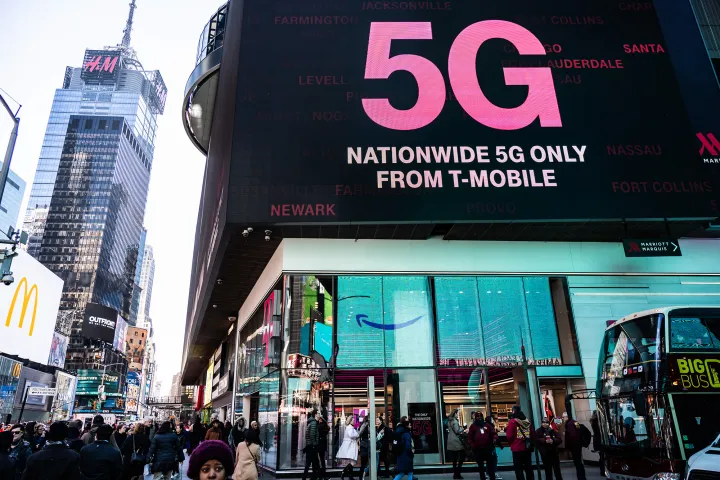
Every few months, a new market analysis comes out comparing the top 5G performance and availability among U.S. carriers. Each time, we wonder if the latest report will finally topple T-Mobile, which has held a commanding lead over rivals AT&T and Verizon for years. Yet, with each new report, T-Mobile pulls farther ahead while AT&T and Verizon are left in the dust.
With that in mind, Opensignal’s latest 5G Experience Report doesn’t bring too many surprises, at least in broad strokes. T-Mobile continues to deliver 5G download speeds that are more than twice those of any other carrier and more than twice the 5G availability. This means you won’t just get faster performance on T-Mobile’s 5G network, but you’re more likely to be able to find a 5G connection.
That’s a stark contrast to the early days of 5G when Verizon’s extremely short-range mmWave network delivered staggering download speeds of up to 4Gbps for the lucky 1% of Verizon subscribers who could find a mmWave transceiver.
Still, although T-Mobile may come out on top for overall download speeds and availability, there’s a bit of nuance here. Opensignal’s analysis shows that Verizon and AT&T still hold their own against the Un-carrier behemoth in some regions and when it comes to certain aspects of the 5G experience.
The 5G speed plateau

T-Mobile had a big head start in rolling out faster mid-band 5G services thanks to its 2020 merger with Sprint, while Verizon and AT&T couldn’t roll out a similar midrange spectrum until their C-band deployments began in early 2022.
While many believed that C-band would close the gap with T-Mobile, that hasn’t happened. When Verizon began aggressively rolling out the new spectrum in January 2022, its median 5G download speeds jumped by nearly 52% practically overnight, breaking the 100Mbps barrier for the first time.
However, that initial meteoric rise turned out to be a one-time phenomenon. Verizon’s median speeds have danced around that 100Mbps mark ever since. Meanwhile, T-Mobile hasn’t sat on its haunches but has continued to expand its coverage far and wide, not only preserving its lead but pulling even further ahead.
Nevertheless, we may be reaching peak 5G, as even T-Mobile’s numbers have stabilized around 200Mbps over the past few months. According to Opensignal’s latest report, T-Mobile’s average download speeds nationwide now sit at 195.5Mbps, which works out to twice as fast as Verizon’s 96.3Mbps and more than 2.4 times that of AT&T’s 80Mbps.

Opensignal adds that users saw slight increases of about 10Mbps in average 5G download speeds compared to the last report, with Verizon coming out slightly ahead at 11.4Mbps versus a 9.1Mbps increase for T-Mobile.
If you’re comparing reports, it’s also worth mentioning that Opensignal’s methodology typically produces slightly lower overall numbers than Ookla’s speed tests, which measure median download speeds rather than average speeds. However, both reports show roughly the same performance gaps.
Interestingly, Verizon edged out T-Mobile slightly when it came to average 5G upload speeds, clocking in with an 18.5Mbps average versus T-Mobile’s 18.2Mbps. That’s a statistically insignificant difference, so we think it’s fair to call it a tie. However, what is significant is that Verizon pulled ahead in this area from the last report, gaining 2.4Mbps, breaking T-Mobile’s seven-win streak.
T-Mobile’s rapid expansion continues

Fast 5G speeds won’t do you much good if you can’t find a 5G network, and this is another area where T-Mobile is leaps and bounds ahead of the pack, boasting 57.9% availability in Opensignal’s latest report.
Opensignal’s availability metric doesn’t directly measure geographic coverage; instead, it measures the percentage of time those with a 5G phone and 5G plan are actually connected to a 5G network in the places where they spend most of their time. It’s a much more practical way to look at 5G coverage than worrying about whether you’ll find a 5G tower in the Nevada desert or Wyoming’s Hole in the Wall.

Despite Verizon’s claims that its fastest 5G Ultra Wideband network covers 200 million people, Opensignal discovered that Verizon customers could find a 5G network only 9.8% of the time. They spent the rest of their time on the company’s slower 4G/LTE network. That’s even more surprising considering that Opensignal measures 5G availability across all bands, including Verizon’s low-band 5G Nationwide network. While that may not be much faster than 4G/LTE, it meets Opensignal’s criteria for 5G availability.
Interestingly, AT&T scored higher on this metric, with its customers accessing 5G service 20.7% of the time. Since AT&T’s mid-band 5G Plus network hasn’t rolled out to more than a handful of cities, AT&T users are likelier to spend most of their time on the carrier’s slower low-band 5G network.
Still, these scores pale compared to T-Mobile, where customers spend more than half their time with a 5G signal. T-Mobile’s 57.9% score represents an increase of 8.2% over the last report, which itself saw a 9.2% boost from the analysis before that. That’s still a surprisingly low number when you consider T-Mobile’s claims that its 5G Ultra Capacity network already covers 260 million people or over 75% of the U.S. population, and it’s working on expanding that to 300 million by the end of 2023.

When Opensignal broke those numbers down by state, T-Mobile was also the clear winner in availability across the board. The Un-carrier scored highest in the District of Columbia at 68.8% and had the most significant lead in Idaho, where its 62.2% score dwarfed AT&T and Verizon’s 5G availability, which came in at 5.7% and 7.0%, respectively. Similar spreads were seen in Kansas, Maryland, Missouri, Montana, Nebraska, North Dakota, Oregon, South Dakota, Utah, and Wyoming.
Verizon provides the best 5G experience

While T-Mobile continues to dominate in raw speeds and availability — arguably the two most important metrics — Verizon remains on top in Opensignal’s 5G experience categories, which cover video, live video, games, and voice apps.
Most of the scores are pretty close, and all three carriers rate in Opensignal’s “Good” tier for Video Experience and Live Video Experience, which means users are “able to stream video at 720p or better with satisfactory loading times and little stalling while connected to 5G.”

For Voice App Experience, Verizon and T-Mobile both scored “good” at 81.7 and 80.0, respectively, which means “many users are satisfied, but some experience minor quality impairments.” AT&T came in with a lower 78.3, putting it in the “acceptable” tier.

In the 5G Games Experience category, Verizon came out well ahead with a score of 81.1, while T-Mobile was slightly behind at 77.1, and AT&T lagged further behind at 68.8. This puts T-Mobile and Verizon both in the “good” tier, meaning “most users deem the experience acceptable and do not see a delay between their actions and the game,” It likely speaks to lower latency on Verizon’s 5G network. AT&T was in the “fair” tier.
What it all means

These numbers show that T-Mobile is aggressively rolling out its 5G services nationwide, making it a safe bet that the Un-carrier will provide the best 5G performance and experience for most users Verizon’s “5G Experience” awards notwithstanding.
It’s important to remember that these are average speeds, which means they represent the common experience of most customers across the nation but won’t necessarily apply to every individual situation. They also don’t represent the maximum speeds you’ll likely see when you have good 5G coverage from any of the big three carriers.
Further, if you live, work, and play in an area with good Verizon 5G mmWave coverage, there’s little doubt that this will provide you with a better overall 5G experience. That’s a quintessential outlier scenario, though, as studies have shown that Verizon customers spend less than 1% of their time on the carrier’s mmWave network, where each transceiver has about the range of a city block.
Still, even though 5G speeds are starting to plateau, coverage is not. All three carriers still have a lot of room for expansion before the nation is fully blanketed with 5G. If anything, that will push the average and median download speeds higher, especially for AT&T and Verizon, where most customers are likely still on the slower low-band networks that don’t deliver on the full promise of 5G.



